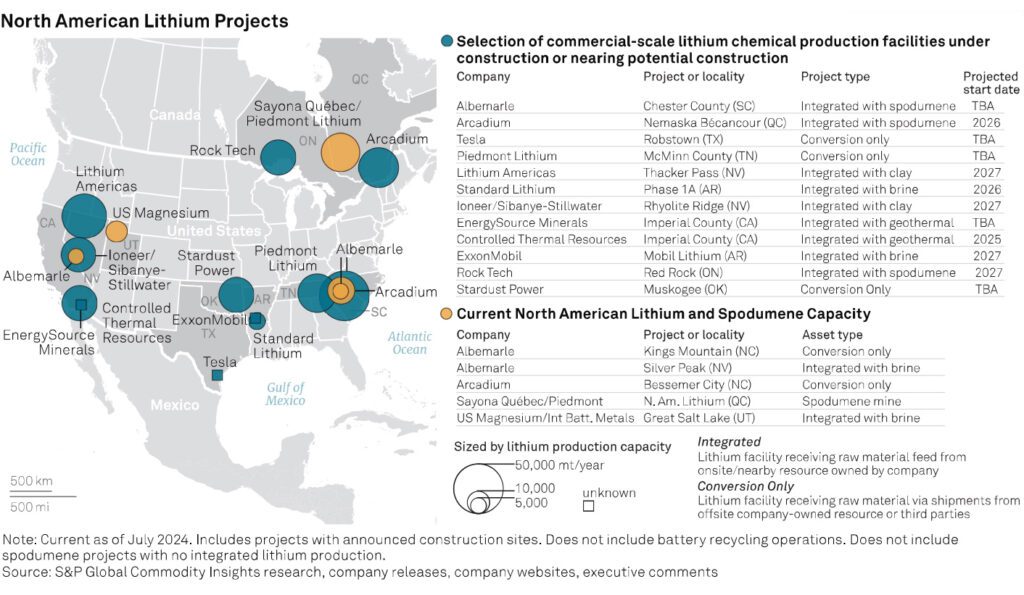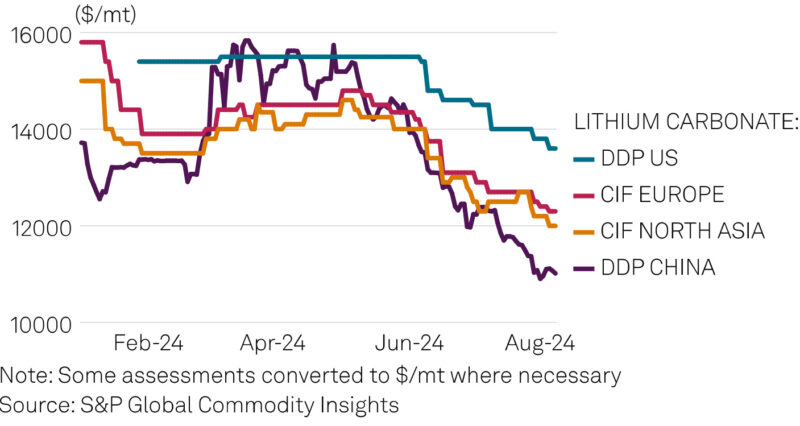Stardust Power is charting its entry into the burgeoning lithium supply chain in the US, with plans to construct a lithium refinery in Muskogee, Oklahoma. The proposed facility would be capable of processing a variety of brine inputs and potentially producing up to 50,000 t/y. This could fill a critical lithium supply gap in the US, where many developers are jockeying to establish domestic production that will support the country's onshoring initiatives and electrification needs.
Stardust Power CEO Roshan Pujari spoke with S&P Global Commodity Insights Reporter Nick Lazzaro about the importance of his company's recent public listing on NASDAQ and the subsequent impact on its project development.

What is the expected timeline for the development of the Oklahoma lithium refinery?
We’ve completed the technical due diligence … the next stage for us is finishing the permitting process and doing the front-end loading level 3 engineering study, which can take us to major construction. We seek to have a groundbreaking in the next couple of quarters. Then, it’s typically an 18- to 24-month process to build it, and there are a lot of things we can do to make that timeline more expedient.
How will Stardust's recent public listing benefit its refinery project development and business plan moving forward?
We saw an important opportunity to be a public company at this stage in our journey largely for two reasons. One reason is the access to capital markets as we look to diversify our ability to raise capital. Access to capital markets is always good for diversifying risk. Second, and maybe most importantly, we see an opportunity to leverage public equity for vertical integration, where we would acquire the upstream raw material production and vertically integrate it with our midstream refineries.
Where do you anticipate Stardust will source lithium brine feed from for the refinery?
A strength of our business model is that we’re designing the large central refinery to be optimized for multiple sources of brine input so we can aggregate supply and scale manufacturing of battery-grade lithium more efficiently.
We have three “buckets” of supply. The first being working with oil and gas producers on recycling produced water. A lot of these producers are creating water as a byproduct of their existing oil and gas production. In certain shales, that produced water can be rich in lithium. We’re working with oil and gas producers to recycle that produced water and create lithium feedstock. That’s a great short-term supply because it exists already.
We have three “buckets” of supply. The first being working with oil and gas producers on recycling produced water. A lot of these producers are creating water as a byproduct of their existing oil and gas production. In certain shales, that produced water can be rich in lithium. We’re working with oil and gas producers to recycle that produced water and create lithium feedstock. That’s a great short-term supply because it exists already.

Have you been in talks with any potential offtake partners?
We have been in deep discussions with many offtakers and are proud to report, even at this stage, we have commitment for multiples of what we could produce at full capacity. The next stage for us is to select our strategic partner, and we’ll do a definitive offtake agreement. When working with OEMs (original equipment manufacturers), often they want to secure the supply line and they’ll direct where it’s sent to, which is their cathode producers. No matter who buys it, whether it’s the OEMs, the trading houses or the cathode manufacturers, it’s really designed for the EV ( electric vehicle) market.
What makes your project in Oklahoma stand out from those of your competitors?
Sustainability is built into each step of our process, from our choice of lithium brine feedstock over hard rock spodumene, which has a larger environmental impact than a brine resource, to our production lines that are designed to be fully electric and have no liquid discharge, so we’re not sending pollution into municipal water systems or other waterways. And Oklahoma is blessed with a lot of sustainable power on the grid from wind, solar and natural gas, so our process is very efficient and environmentally friendly.
Our speed to market is another point of differentiation. We’re taking limited technology risk by using proven and established technologies instead of trying to deploy proprietary technologies so we can get to market faster with our products.
A big reason we’ve gotten a lot of investor interest is because we’ll be manufacturing in the US. The onshoring of these critical materials has a lot of tailwinds behind it. Also, a big value-add to investors is our business plan to source mostly nondilutive capital for the construction of our facility that includes bank finance, government grants and potential prepayment facilities.
How can ex-China market price information benefit global lithium markets?
Decoupling from the Chinese spot market is very important because we see a lot of potential for market manipulation in that market. It doesn’t really make sense for the US market and the Chinese market to be coupled, so that’s an important mission.
Platt Global Lithium Assessments

Do you anticipate the outcome of this year's US presidential election to impact electrification trends or lithium industry investment?
I’m happy that onshoring critical material manufacturing is a largely bipartisan issue because of the national security priority of doing this. We’re getting tremendous support from both sides of the aisle.
President Joe Biden has done a lot, including the Inflation Reduction Act that creates a premium for American manufactured battery-grade lithium to receive the full EV tax credit. A lot of incentives and government grants [have been created] under the current administration.
Also, former President Donald Trump is a big fan of lithium. He really supported Lithium Americas at the end of his presidency and has been vocal about his support there.
There’s some talk about EV adoption rates and maybe that would change. We see that there might be ebbs and flows, but we see that largely moving forward because those are coming at the request of state governments like California and New York that are requiring the transition to EVs. There might be small dips here and there, but we see the transition to an EV economy as almost inevitable.
Stardust Power Contacts
For Investors:
William Tates
Stardust Power Inc.
william@stardust-power.com
For Media:
Michael Thompson